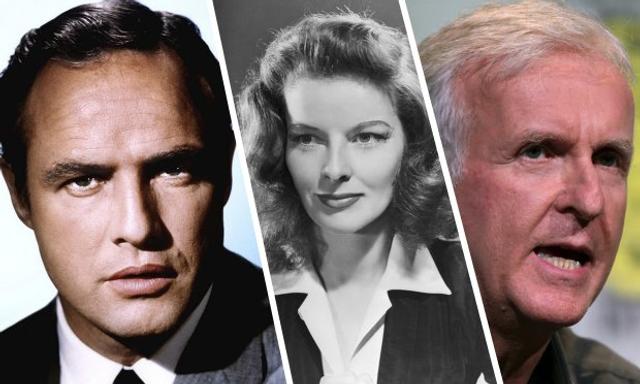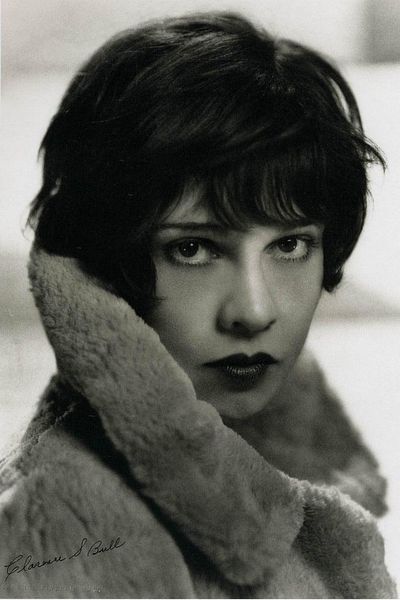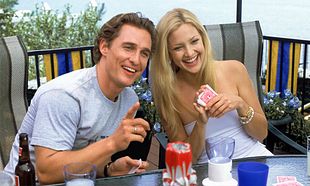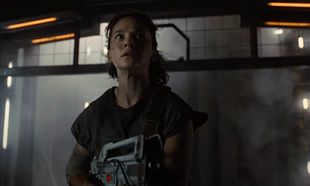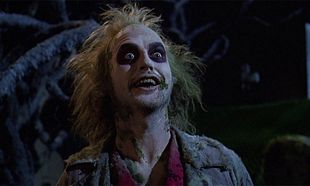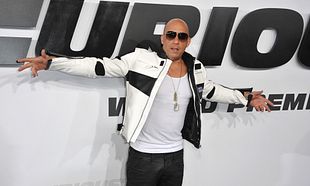Although film has been around for well over 100 years, its popularity has never waned in that time and its constant striving for innovation has never diminished.
From Lon Chaney and Mary Pickford all the way up to James Cameron, film is always about pushing the boundaries of what's capable and astonishing viewers with the latest ingenuities. There's literally thousands upon thousands of pioneers in film, but we've scaled it down to ten people who've made film what it is today.
Take a look.
10. ANITA LOOS
Up until Anita Loos, screenplays in film weren't really big business nor were they anything in the way of what we have today. Loos, the daughter of a failed newspaper publisher, went on to become the first staff screenwriter in studio history. Moreover, her work for the likes of Douglas Fairbanks and the screenplay for Gentleman Prefer Blondes became some of the most celebrated work of the early twentieth century. All told, Loos had well over 100 screenwriting credits to her name and countless more uncredited writes and rewrites of screenplays.
.jpg)
9. JAMES CAMERON
While many people would argue that Avatar had no impact on popular culture whatsoever, despite it being the highest-earning film of all time, you can't deny the sheer force of technology that went behind it. The film was so ahead of its time that Cameron literally had to stop production in order for technology to catch up with his vision. The extensive use motion-capture acting and stereoscopic technology was rightfully heralded as a breakthrough and, sure enough, resulted in massive box-office success for the film. All told, Avatar made $2.788 billion and Cameron solidified his reputation as a modern pioneer in film.
.jpg)
8. SAUL AND ELAINE BASS
Everyone loves a good opening credits sequence or a good poster and you have Saul and Elaine Bass to thank for that. Effectively inventing the idea of modern kinetic typography, title sequences in films were usually dull and merely projected onto the curtains of theatres before they were drawn to begin the very opening scene of the film. Bass, however, made them as much a part of the film as the music and the cast. Although best known for their work with Alfred Hitchcock, it wasn't until the '80s that their work was reappraised by James L. Brooks and Martin Scorsese. The opening title sequence for Goodfellas, Casino and the remake of Cape Fear were all made by the Basses. Of their work, screenwriter Nicholas Pileggi said that "...(you) write a book of 300 to 400 pages and then you boil it down to a script of maybe 100 to 150 pages. Eventually you have the pleasure of seeing that the Basses have knocked you right out of the ballpark. They have boiled it down to four minutes flat."
7. LON CHANEY
When you look at the likes of Gary Oldman or Andy Serkis, modern actors who lose themselves completely in a role through makeup, prosthetics and so on, they're really only scratching the surface of what Lon Chaney did. The man effectively invented the whole idea of modern prosthetics with his early horror work on The Hunchback Of Notre Dame and Phantom of the Opera. As well as this, Chaney truly attempted to embody his character with a real sense of psychology. He was so entered fully in his roles that Chaney claimed, between films, "there is no Lon Chaney."
.jpg)
6. MARY PICKFORD
The idea of modern actors taking charge of their career through sharp business acumen is nothing new. In fact, Mary Pickford basically the first actor / businesswoman. Forging an incredible career and earning herself the title as America's Sweetheart, Pickford had a savvy understanding of just how cut-throat the film industry was and took on the studios at their own game. Within her first three films, Pickford was credited as a producer and by 1919, she founded United Artists with Charlie Chaplin, Douglas Fairbanks and D.W. Griffith. United Artists changed the game for film studios, producing truly independent work and hiring some of the most innovative names in the industry. Pickford's pioneering work helped to shape the industry and how studios run.
.jpg)
5. STANLEY KUBRICK
There are very few modern directors, or indeed classical directors, who poured so much time, effort and money into the idea of set design. Kubrick's eye for detail has been unmatched since his passing in 1999. Barry Lyndon, The Shining, 2001: A Space Odyssey and Full Metal Jacket have all been noted for their incredible set designs and attention to detail, but it was Kubrick's use of all these mixed with incredible visual storytelling that made him one of the greatest directors who ever lived. Moreover, Kubrick's work was incredibly accessible. It could be enjoyed on many levels or the surface. For example, The Shining could be viewed merely as a horror film, however beneath the surface lies a subtext on Native American genocide and the Jewish Holocaust. 2001: A Space Odyssey can be read as a fantastical vision of the future or the actual creation of humanity itself. Never before had a director made such layered, interpretive films and so boldly as well.
4. SIDNEY POITIER
It's hard to put in context just how groundbreaking Sidney Poitier's work was throughout the '60s. In a time when African-Americans were marching in the streets for civil and economic rights, Sidney Poitier was starring in some of the most highly-regarded films and working with some of the leading lights in the industry. In 1967, Poitier became the first African-American man to win an Oscar in a competitive category for his performance in Lilies of the Field. However, Poitier would become best known for his role in the mystery film, In The Heat Of The Night, where he played the tough and resourceful Det. Virgil Tibbs, who's targeted by a loutish, racist police chief for a murder and becomes involved in the investigation. As well as his work in acting, Poitier also directed. Stir Crazy, with Richard Pryor and Gene Wilder, became the first film directed by an African-American to surpass $100,000,000 at the box-office.
3. KATHERINE HEPBURN
There are many, many modern female actors who owe a debt of gratitude to the pioneering work of Katherine Hepburn. As well as effectively writing her own career path, Hepburn fully eschewed the idea of celebrity culture and let her incredible work speak for itself. In the early days of Hollywood glamour, Hepburn specifically casual clothes in direct contravention to what was expected of her. As well as this, Hepburn still holds the record for the highest amount of Oscars for any actor, male or female, and was listed as the Greatest Female Star of Classic Hollywood by the AFI.

2. MARLON BRANDO
Many actors working today, such as Daniel Day-Lewis and Robert DeNiro, cite Marlon Brando as their major influence. It's easy to see why. Before Brando, very few actors worked with the same sense of naturalism that he did. Much of the performances were overly theatrical, shouting to the rafters and full of expression. Brando was a complete departure and effectively popularised modern acting. He internalised his thinking and performances, thus drawing audiences in and making them watch and understand his motivations. From On The Waterfront all the way up to The Godfather, Brando's work became the paragon of screen acting for many and influenced generations to come.
1. NATALIE KALMUS
If you've never heard of Natalie Kalmus, don't worry because you've definitely seen her work. Originally credited as a Color Supervisor, Kalmus is effectively responsible for some of the most important filmmaking processes still used to this day. Kalmus was responsible for making sure that the Technicolor process in filmmaking worked with the colours of each scene. Because the technology was so new, many directors insisted on making colours as loud and bright as possible whereas Kalmus, who strived for realism, specifically changed costumes and sets so as to show the abundance of neutral colours throughout. Her work on the idea of colour consciousness - as in purple denoting royalty and pompousness, green as freshness and nature - is now used in almost every film and television show out there. If you see a scene in a film and note how the colours play into the scene, it's because of Natalie Kalmus.
Header Image via Flickr / Creative Commons

